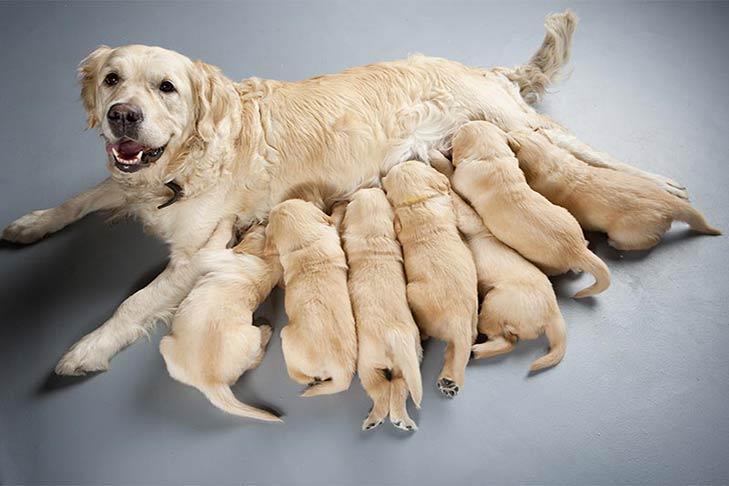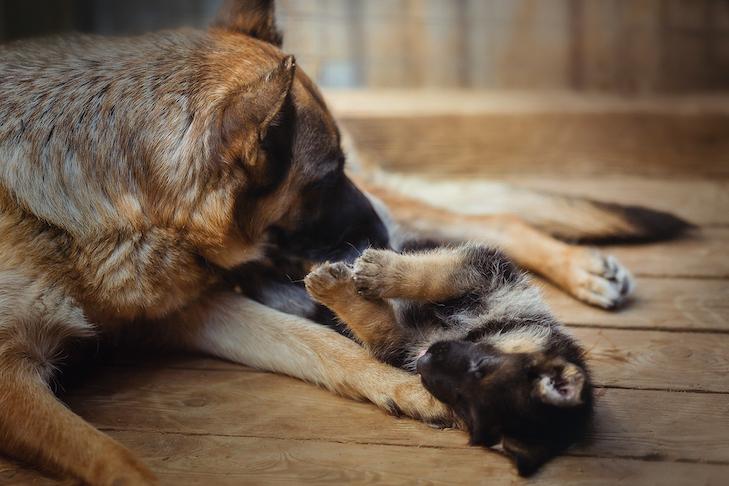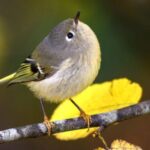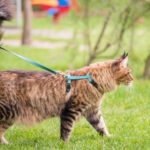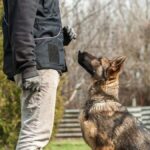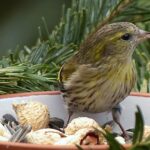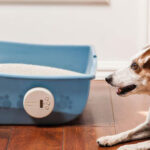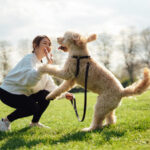Bringing new life into the world is a remarkable journey, and for a mother dog, the experience of giving birth is no exception. As she transitions into motherhood, her behaviors can change drastically, reflecting her instincts and the needs of her newborn puppies. Whether you are a seasoned dog owner or a first-time puppy parent, understanding the behaviors of a mother dog after birthing is crucial for ensuring her well-being and that of her little ones.
In this article, we’ll explore the typical behaviors you can expect from a newly whelped mother dog, along with practical tips on how to support her during this critical period. From nurturing instincts to protective actions, we’ll provide you with the knowledge you need to create a loving and safe environment for both mom and her pups. So, let’s dive in and discover the incredible world of canine motherhood!
Table of Contents
- Understanding Maternal Instincts in Dogs After Giving Birth
- Recognizing Signs of Stress and Comfort in New Mother Dogs
- Creating a Safe and Supportive Environment for Mother and Puppies
- Essential Care Tips for Assisting a Mother Dog Post-Birth
- Q&A
- In Retrospect
Understanding Maternal Instincts in Dogs After Giving Birth
Maternal instincts in dogs emerge powerfully after giving birth, shaping their behavior as they care for their newborn puppies. The mother dog will display a range of instinctive behaviors that ensure the well-being of her litter. These behaviors include:
- Nurturing: The mother will keep her puppies close, using warmth and her body to provide comfort.
- Cleaning: She will lick each puppy, not only to keep them clean but also to stimulate their vital functions.
- Feeding: The mother instinctively knows the puppies’ need for nutrition and will encourage them to nurse often.
This nurturing process is vital for the puppies’ survival and growth. However, it is also essential to monitor her behavior closely. Some common signs that she may need assistance include:
- Excessive Aggression: If she seems overly protective, it might be a sign of anxiety.
- Lack of Interest: A mother who ignores her puppies may require veterinary attention.
- Nursing Problems: If puppies are struggling to nurse, they might need help from you to ensure they get the nutrition they need.
Recognizing Signs of Stress and Comfort in New Mother Dogs
New mother dogs, much like human mothers, undergo a range of emotional and physical changes after giving birth. Recognizing the signs of stress in your mother dog is crucial for her well-being and that of her puppies. Stress signs may include:
- Increased vocalization or whining
- Excessive panting or pacing
- Withdrawal from her puppies or hiding
- A decrease in appetite or refusal to eat
Understanding these cues enables pet owners to provide a calming environment, ensuring the mother feels safe and secure as she adjusts to her new role.
On the flip side, there are also indications of comfort and contentment in mother dogs. When she feels at ease, you might observe her exhibiting behaviors such as:
- Relaxed body posture and tail position
- Grooming her puppies gently
- Quiet and soft vocalizations
- Allowing her puppies to nurse without any signs of discomfort
Being able to differentiate between these states can significantly enhance your ability to support her during this pivotal time, fostering a nurturing atmosphere for both the mother and her newborns.
Creating a Safe and Supportive Environment for Mother and Puppies
Creating a safe and supportive environment for a mother dog and her puppies is crucial during this vulnerable time. To promote the well-being of both the mother and her new litter, it’s essential to establish a quiet, comfortable space away from the hustle and bustle of daily life. Here are some key elements to consider:
- Quiet Space: Find a secluded area where the mother can feel secure, away from loud noises and heavy foot traffic.
- Clean Bedding: Use clean, soft bedding materials to provide comfort and warmth for the mother and her puppies.
- Proper Temperature: Ensure the area is kept at a comfortable temperature, avoiding drafts or excessive heat.
- Easy Access to Food and Water: Place nutritious food and fresh water nearby, enabling the mother to nourish herself without leaving her puppies for long.
Monitoring the mother’s behavior and adjusting the environment as needed will foster a supportive atmosphere. It’s important to observe her interactions with her puppies while allowing her the space she needs. Here are some signs to look for in understanding her comfort level:
| Behavior | Implications |
|---|---|
| Resting comfortably away from puppies | May need a break or alone time |
| Grooming puppies regularly | Indicates strong maternal instincts |
| Vocalizing or growling | Protective behavior, assess for stressors |
| Refuses to leave the nest | Shows attachment and commitment to the litter |
Essential Care Tips for Assisting a Mother Dog Post-Birth
After giving birth, a mother dog requires extra care and attention to ensure her well-being and that of her puppies. Monitoring her health is crucial; keep an eye out for signs of infection, such as fever or foul-smelling discharge. Additionally, make sure she has access to fresh water and a balanced diet, rich in nutrients to support milk production. Providing a quiet, comfortable space for her and her puppies is essential. This den-like area should be free from disturbances and equipped with soft bedding to facilitate recovery and bonding.
It’s also important to watch her behavior closely as she interacts with her litter. Mother dogs commonly exhibit protective instincts, curling around their puppies or growling if they feel threatened. You can help by minimizing stress in her environment. Consider the following tips for optimal care:
- Provide a calm atmosphere away from loud noises.
- Limit visitors to ensure she feels safe and secure.
- Encourage regular nursing by ensuring the puppies latch on frequently.
By fostering a supportive environment, you can help the mother dog relax, allowing her to care for her puppies effectively.
Q&A
Q&A: Behaviors of a Mother Dog After Birthing – What to Expect and How to Help
Q1: What are some common behaviors exhibited by a mother dog immediately after giving birth?
A1: After giving birth, a mother dog, or dam, will often exhibit a range of behaviors. Initially, she may be disoriented or exhausted due to the physical exertion of labor. It’s common for her to focus on her puppies, nuzzling and licking them to stimulate their breathing and promote bonding. She may also clean them thoroughly, which helps in removing any amniotic fluids and scents from the birthing process. Additionally, you may observe her being protective and defensive of her litter, growling or barking to deter perceived threats.
Q2: How can I help a mother dog during the first few hours after she gives birth?
A2: Providing a calm and safe environment is crucial. Ensure that she has a quiet space free from disturbances. Offer her food and water, as she will need nourishment and hydration after the energy expended during labor. Gently monitor her and her puppies, but avoid excessive interference—she knows best how to care for her young. If necessary, you can assist her in cleaning puppies that she seems to overlook, but keep the interaction minimal to allow her to bond with them.
Q3: Is it normal for a mother dog to refuse to eat after giving birth?
A3: Yes, it’s not uncommon for a mother dog to show a reduced appetite immediately after giving birth. This can result from the stress of labor, hormonal changes, or simply being preoccupied with her new puppies. However, if she hasn’t eaten anything for more than 24 hours, it’s essential to consult a veterinarian to rule out any complications.
Q4: How often should I interfere with the puppies and the mother dog?
A4: It’s best to keep your interaction minimal during the first few days. The mother dog needs time to bond with her puppies and establish her routine. Interfere only when necessary, such as if a puppy is not nursing or if there are concerns about the health of the mother or her puppies. Otherwise, let her take the lead in caring for her litter.
Q5: What signs should I watch for that indicate the mother dog might need veterinary assistance?
A5: Keep an eye out for any signs of distress or unusual behavior. If the mother dog is excessively restless, is not nursing her puppies, appears lethargic, has a persistent foul odor, experiences excessive bleeding, or seems in pain, it is important to contact a veterinarian immediately. Additionally, if any puppies are not nursing or appear weak, seek professional advice as well.
Q6: How can I ensure that the mother dog and her puppies are healthy?
A6: Start by providing a tranquil environment where she feels safe. Regularly check that all puppies are nursing and gaining weight; you can weigh them daily to monitor their growth. Ensure the mother has access to high-quality food and fresh water. Regular vet check-ups will help catch any potential issues early, and vaccinations or deworming may be necessary for the puppies as they grow.
Q7: When can I expect the mother dog to return to her normal behaviors?
A7: Typically, a mother dog will start to regain her energy and return to normal behavior within a few weeks after giving birth. However, this can vary depending on her health, age, and the size of her litter. During this time, continue to support her and monitor her progress. As she adjusts, she will likely become more social and interactive.
This Q&A aims to provide you with a helpful guide on understanding and supporting a mother dog after she has given birth. Remember, patience and attentiveness are key in this new journey for both the mother and her puppies!
In Retrospect
understanding the behaviors of a mother dog after giving birth is crucial for ensuring both her well-being and the health of her puppies. By recognizing the signs of her natural instincts, you can better support her during this pivotal time. From providing a calm and safe environment to monitoring her interactions with her new litter, your role as a caretaker is essential. Remember to give her space when needed, while also being attentive to her needs for care and nourishment. With your help, she can transition into motherhood smoothly, allowing her to focus on nurturing her puppies and establishing that vital bond. As you embark on this rewarding journey, always be patient and compassionate—after all, a happy and healthy mother dog will lead to a thriving pack of pups! If you have any concerns or questions, don’t hesitate to contact your veterinarian for guidance. Thank you for reading, and best of luck in this exciting chapter of canine companionship!




